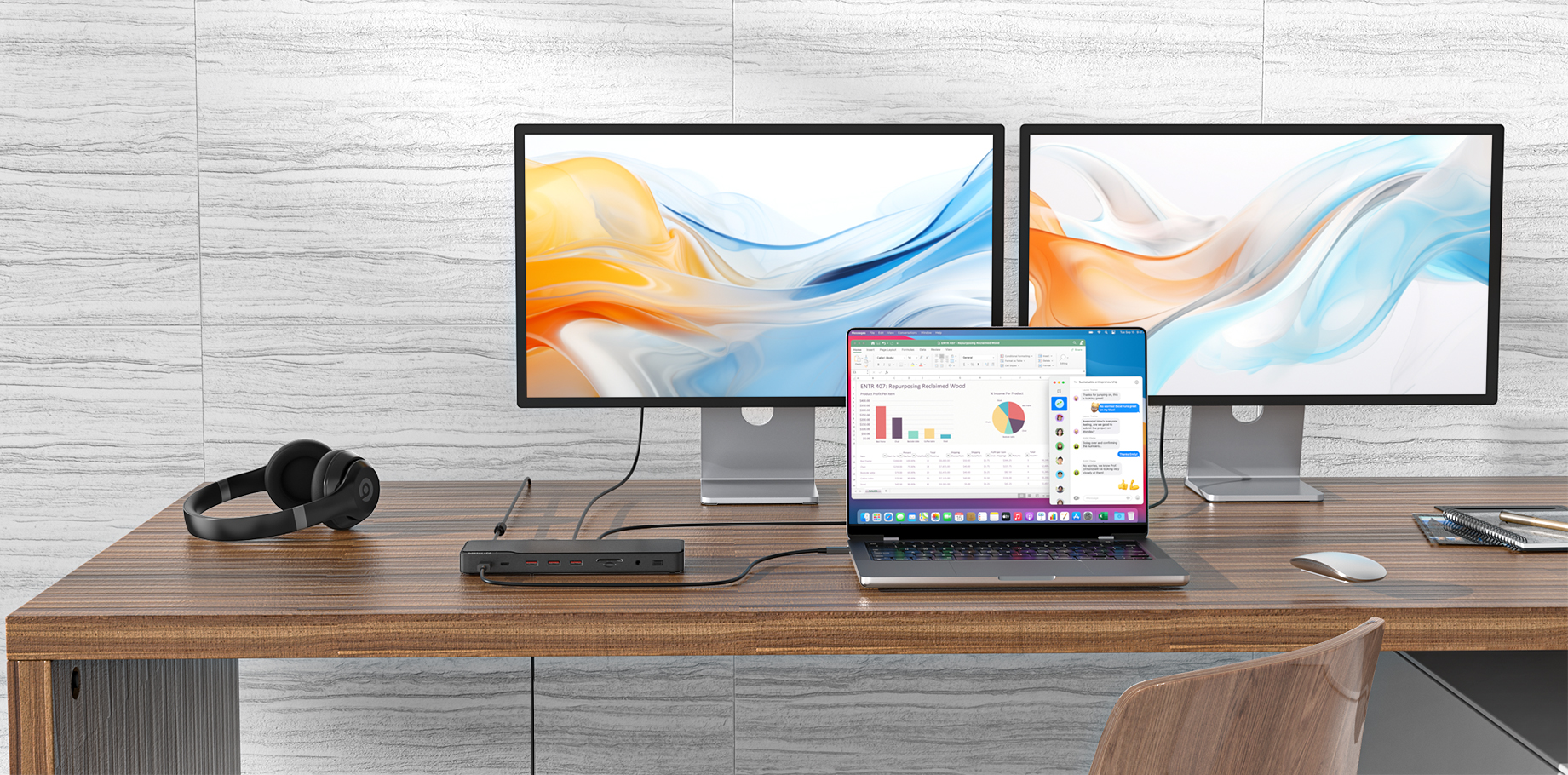Here are a few benefits and letdowns of a Thunderbolt 3 to HDMI hub:
Advantages
① Enhancing Compatibility: A hub simplifies connecting your laptop or computer to a television, allowing you to enjoy movies or other entertainment on a larger screen. It can also be used to connect to a projector for delivering work presentations. For those who frequently work with display screens, a Thunderbolt 3 to HDMI hub is an ideal choice.
② Boosting Work Efficiency: A Thunderbolt 3 to HDMI hub enhances productivity by enabling employees to connect multiple devices to a single computer. This eliminates the need to switch between screens, allowing all necessary windows to be displayed simultaneously and saving valuable time.
③ Improving Communication: With the rise of remote work, effective communication can be challenging. A Thunderbolt 3 to HDMI hub supports dual monitors, helping remote employees communicate and collaborate more efficiently.
④ Enhancing Presentations: Presentation anxiety often stems from fears of wireless display failures between devices and projectors. A Thunderbolt 3 to HDMI hub ensures seamless compatibility, allowing employees to deliver professional and impactful presentations confidently.
Disadvantages
① Increased Strain on the Laptop: Connecting a Thunderbolt 3 to an HDMI hub can lead to performance stress on the laptop. Users may notice faster battery drainage, especially if the hub is non-powered, which can negatively impact the device’s overall performance.
② Reduced Output Quality:When using a hub to connect a laptop to an HDMI output, the resulting display quality may be subpar. This can occur if the graphics card is incompatible, causing additional strain on the device and compromising the clarity of the output.






